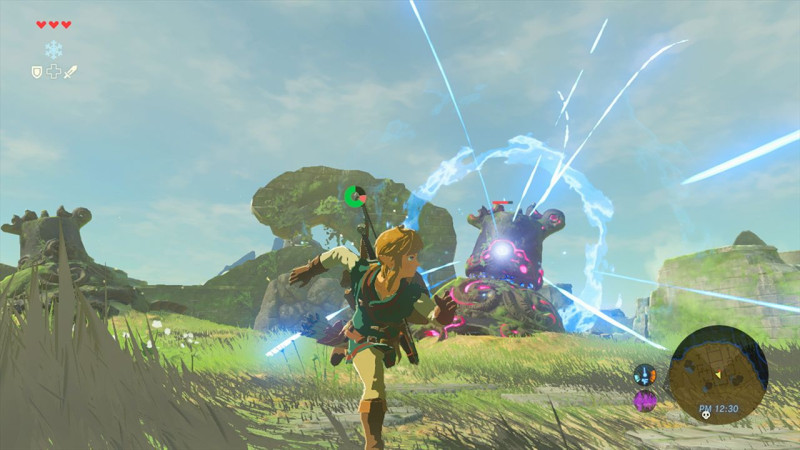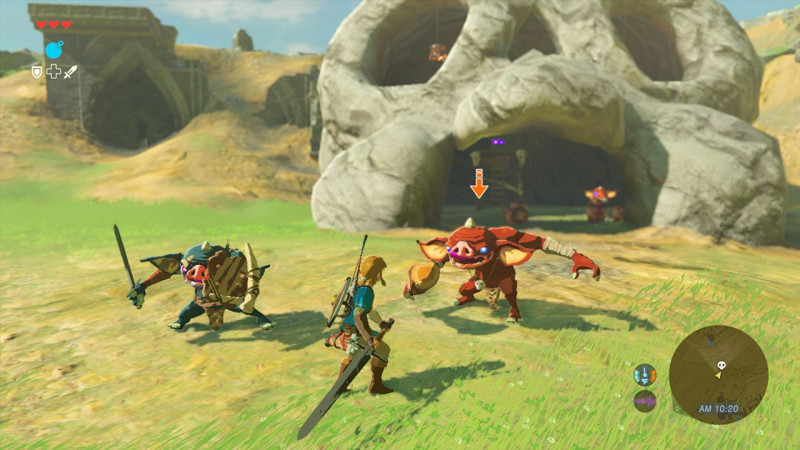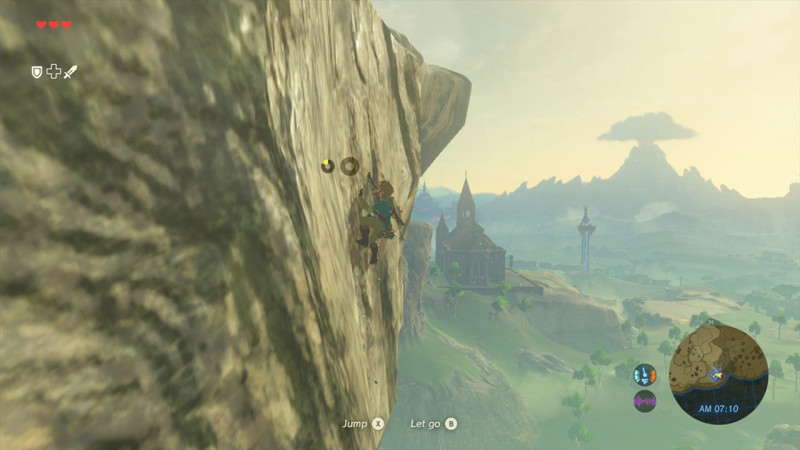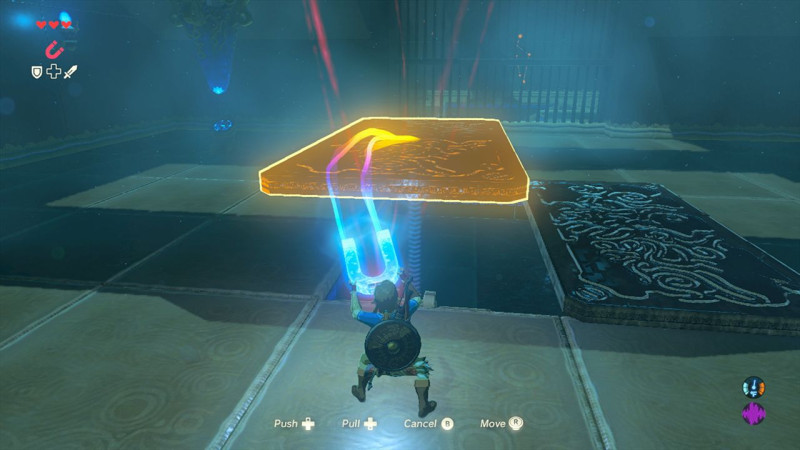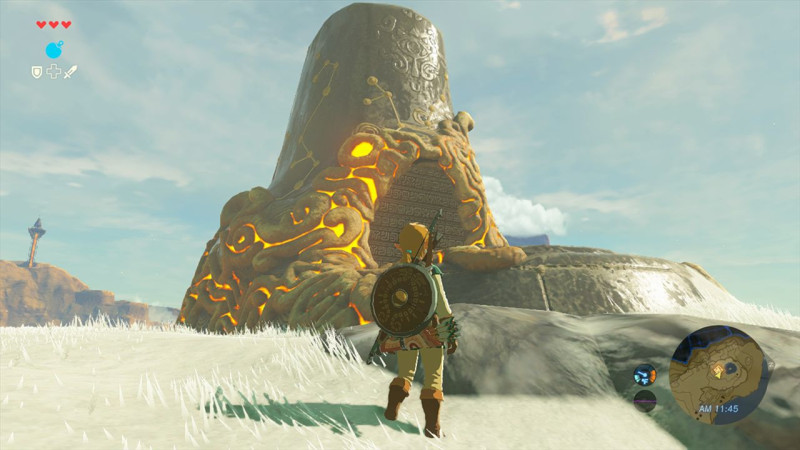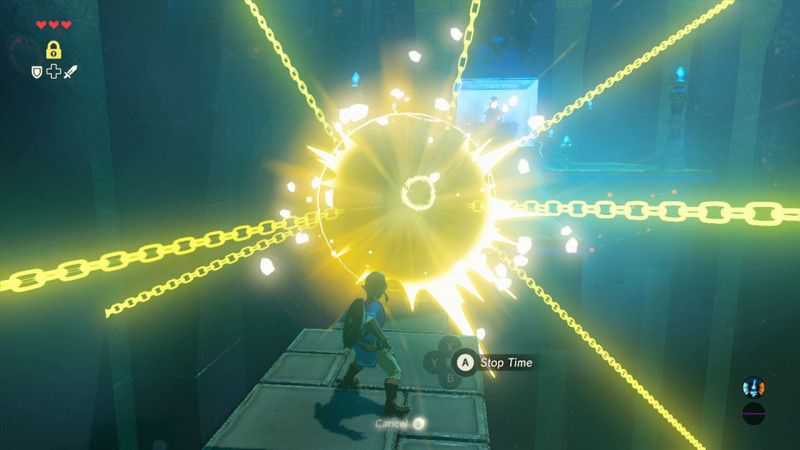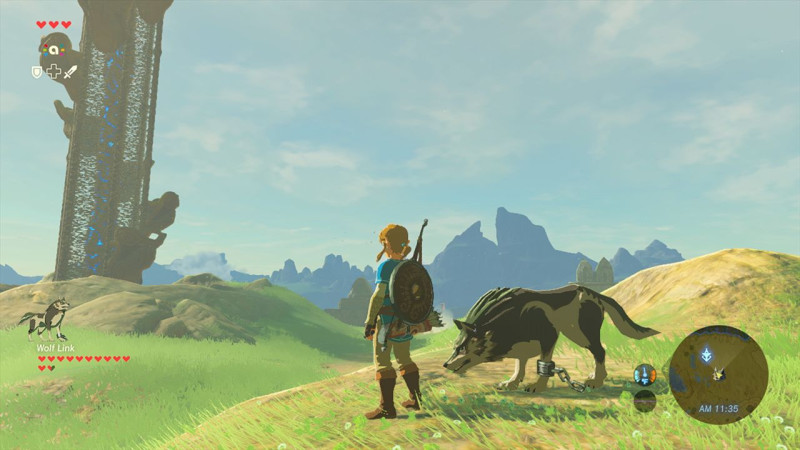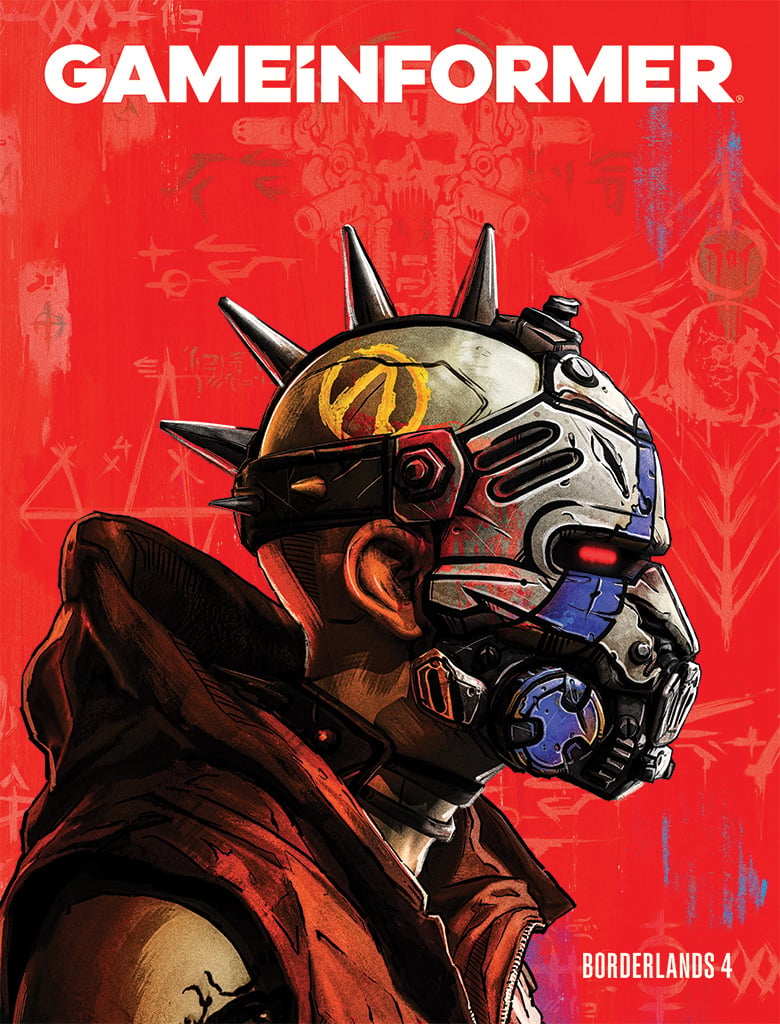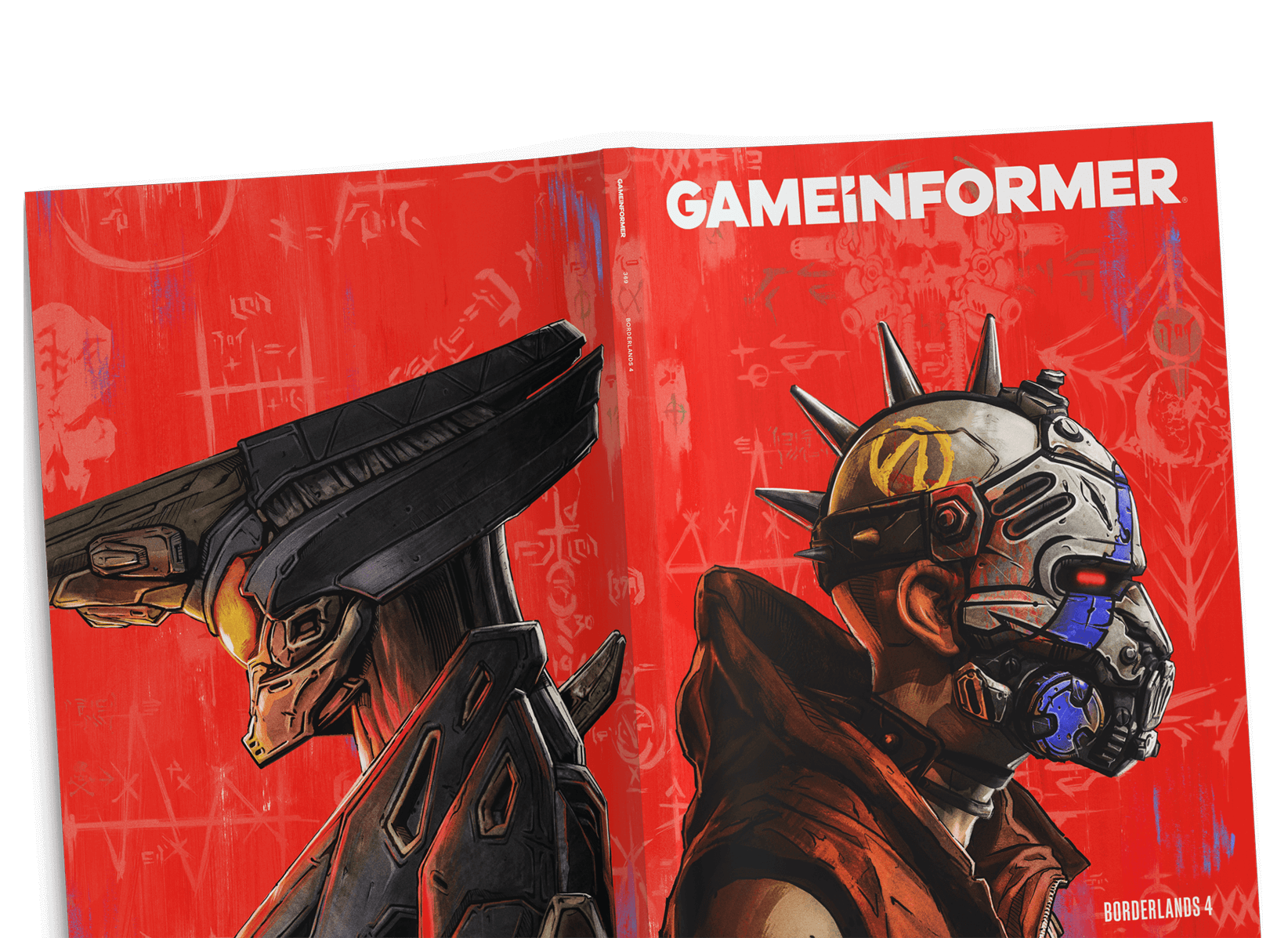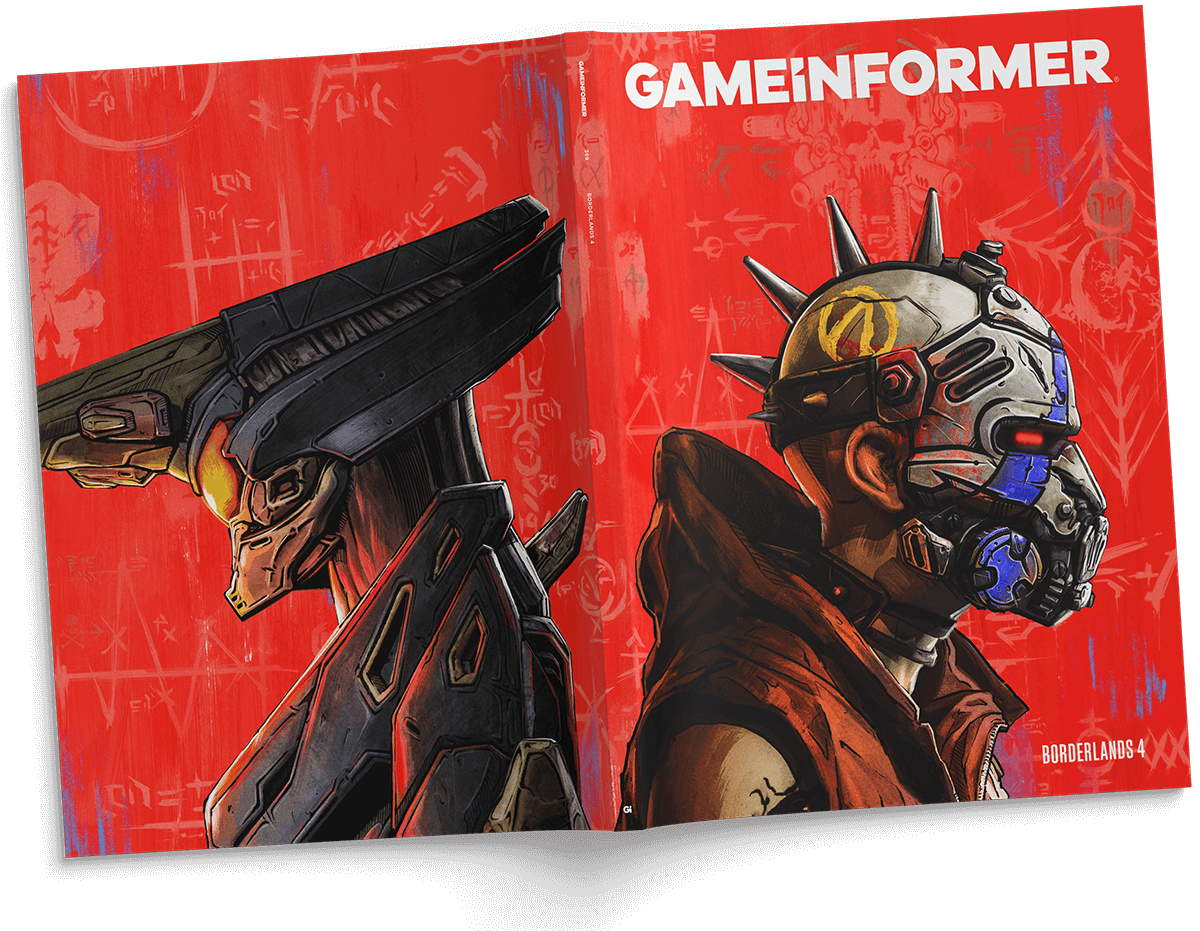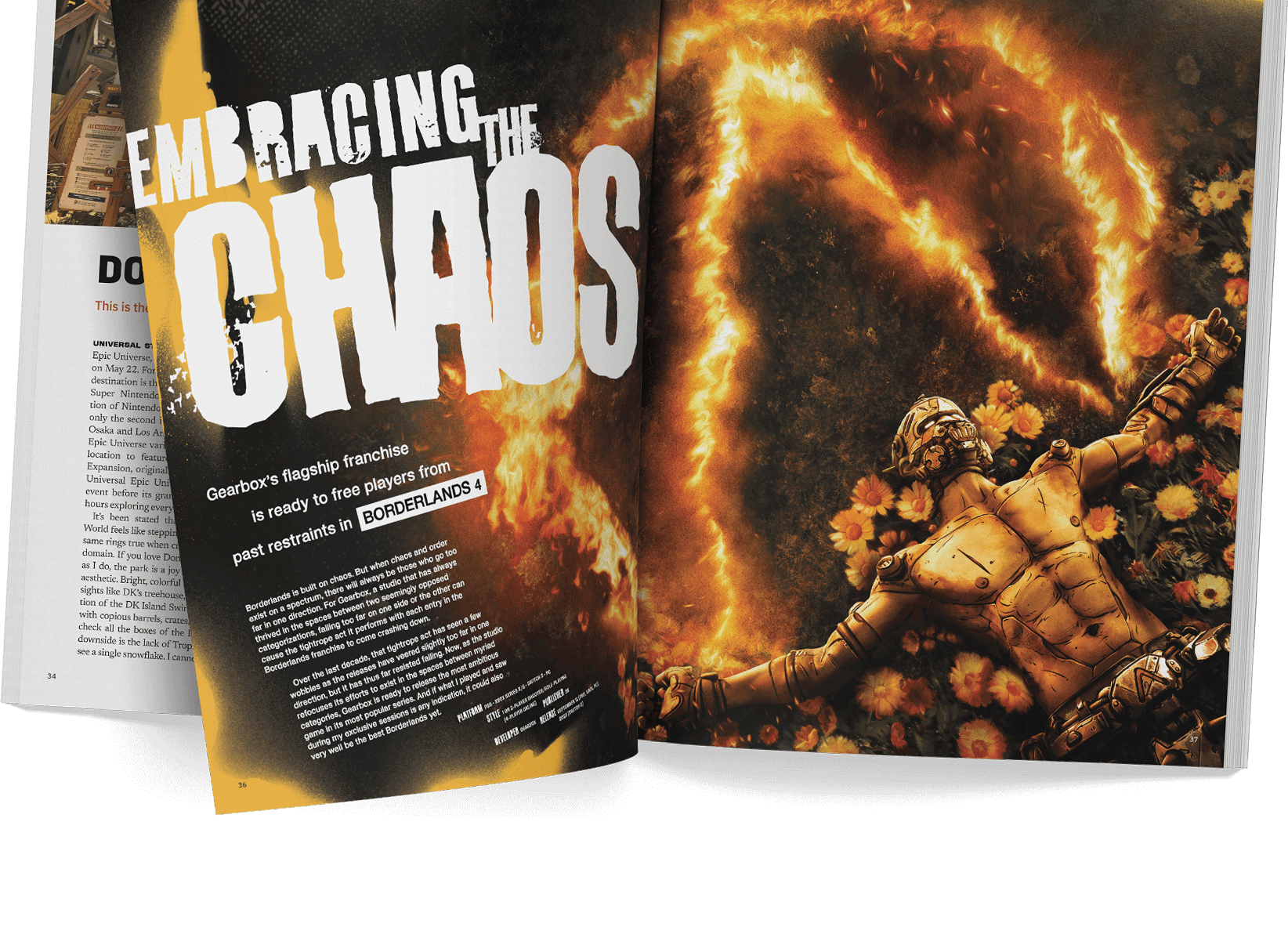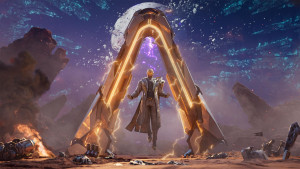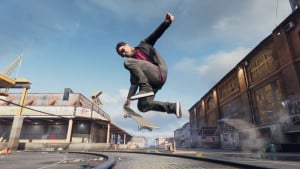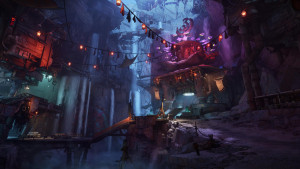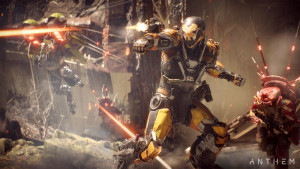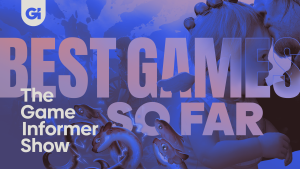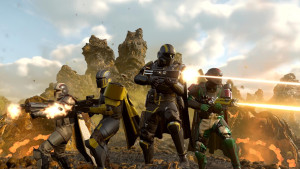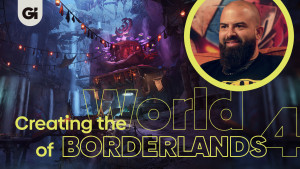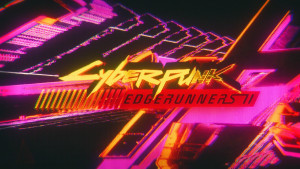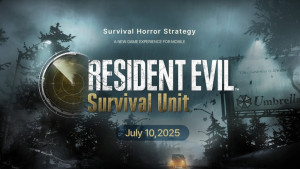The Legend of Zelda: Breath of the Wild
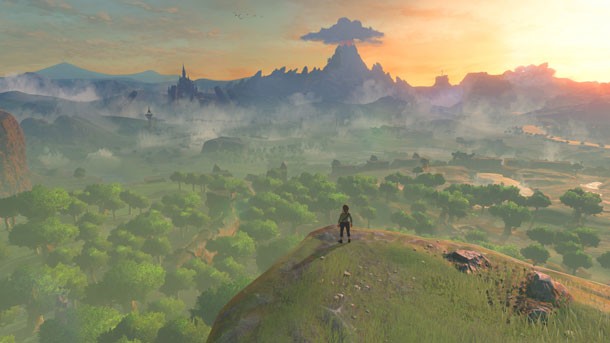
The Legend of Zelda: Breath of the Wild was one of the most impressive games of E3 2016. After playing the game for over 40 minutes, we sat down to grill series producer Eiji Aonouma on why Nintendo is changing up the series formula, what inspired the game's look, and how Breath of the Wild is different from other open world games.

This Zelda game is dramatic change from previous Zelda games, we're
curious why you felt like now was a good time to change up the formula.
Aonouma: So this came up a little bit in our Q and A session earlier, but
someone, a user who played Skyward Sword, said, 'We want to know what happens
in the places you can't go to.' And I think for people, especially the Zelda
fans, they have a curiosity to find out what happens in those places where you
can't go, where you're not supposed to go. So we wanted to create a world where
you can further that investigation, you can go further and further and continue
to search for places where you can't go.
And to make this happen, we needed to create Zelda in a very different way and so that's why it took a little bit longer than we had expected, the development took a lot longer than I had expected. Mainly because as we're developing this game, we realized there's all these new possibilities coming up. Like, 'Oh, we can do this' or 'Let's expand on that.' And so that's why development just took a lot longer. And of course there's stuff that we couldn't include because of time constraints, but I really feel like we were able to shape out the Zelda that we really wanted to, that really lives up to what we had envisioned.
You mentioned the art style is drawn from anime and I'd just like
to know a few examples of specific anime. When we look at it, we see very
bright pastel colors that are very reminiscent of Studio Ghibli. Can you give
some examples of the specific anime that you were influenced by?
There's actually not any
specific animation that we took inspiration from, you know obviously there are
artists that work on this game and part of that is what kind of animation
they watch as they were growing up since it's a build up of their past
experience. So instead of us trying to build a game that's like an animation it
was more about functionally in that animation is a process where you kind of
chip away at the unnecessary stuff and really return to the more simple and
basic colors. And in the same way we try to do that in where we had to make
some of the features of the game very clear, distinct so that it's visible and
clear to the player. So if we put too much detail, too much complexity to the
background and the characters, the character or anything that's going on will
start to blend into the background and be hard to see what's going on. And
that's why we wanted to make it very, pop out and make it very clear that our
intent and the focus is very apparent and clear to the user.
Did you guys look at any other games to see what they were doing?
For example, Skyrim or Witcher feel reminiscent of what you guys are doing with
the open world.
First of all I think
that many of the staff members do play many different kinds of games,
open-world games like you mentioned, but I don't think there was one game that
we really looked at and said we want to make a game like this. Instead like I
mentioned earlier we wanted to really expand on the world of Skyward Sword and
we kind of tried to think about what kind of cycle can we create in the game
that really encourages continuous exploration so that what came up was things
like needing to cook and gather ingredients to eat, needing to procure weapons
from enemies because they break, things that like there's a cycle of expending
something and then procuring something, that's like a main important part of
this game and it was kind of drawn more from that than any singular
inspiration.
When the demo begins, it kinda feels like you're collected with
nature and you can hear the birds and the crickets and there is no music and
then you eventually lead up to a little bit of piano. Can you kind of elaborate
on how the music plays out, does it go full orchestrated? Or are there certain
instruments that are used for certain things?
Definitely some of the music that you heard in the
trailer is all recorded, those are professional performers playing their
instruments, it's a raw recording. And so really what we wanted to do, and
throughout the game, we're using even with the professional piano players, so
we really wanted to make sure we capture recordings of those instruments
because they kind of act, they're more efficient and more appropriate in
bringing up those emotions and the reactions we want out of people and so we
were more intentional in the kind of music and recording that we chose to
include in the game. Obviously we still have a few more recordings to include,
they're not all in there.
So, you know, the person in charge of music he says to me the dynamics of this music is really important, I don't really know what that means but all I can say is that is has a lot effect in bringing out emotion and giving the reaction that we want to the player.
Why
did you guys decided to make weapons so they could break? Can you repair them
at some point? And with the master sword how might fit in there, if that's
something players might get at some point, do they have to worry about that
breaking?
So initially when we thought about this idea of
something breaking and having to get it again, we thought about it with
different items instead of weapons and we tried it out and it was a lot of fun
and we wanted to expand on it and we tried different things and we found the
idea of having to go out and collect things and search for things was very fun
and we thought what about what would be the most fun and what can we apply this
concept to and we could get the most out of this and we realized that weapons is
where it is, because in a world filled with enemies losing your weapon is such
a crucial mistake and you lose your way of fighting and encourages the player
to carefully use their weapons and not swing it every which way however they
want. We also believe that by leading the player to go grab weapons from
enemies and increases the amount of battles they have to go to and gives the
battles a lot more intent, and it worked out really great. So that's why its in
there. And as for your latter two questions, I hope that's something you look
forward to in the release version.
I
think I see it in the logo..
(laughter) So this actually has a slightly different
meaning... There's actually a lot of meaning to the way the sword looks. So when
you do see it in the release version I hope you'll be surprised.

Hyrule
Warriors introduced a female version of Link, named Linkle, and there was a lot
of speculation thaty maybe you'll be able to play as the female version of Link
in Breath of the Wild, is that something you're considering?
There's no female Link in Breath of the Wild. In
terms of Linkle, that's something that Mr. (Hayashi?) from Koei really wanted
to include in the game and we thought for a game like that where you're
constantly switching characters it might work out, but for the type of game
we're making and the fact that there is a Princess Zelda and a Link we just
didn't think that it was quite right. And when I mentioned in the trailer a few
years ago that it might not be Link, and it kind of caught fire that it might
be a female Link, that is not what I had in mind and I was kind of surprised. I
should be careful what I say.
You
showed off the amiibo functionality with the wolf link which was really cool,
but are there other companions in the game that people might come across that
maybe are non-amiibo related?
As Bill kind of jokingly mentioned earlier, you know
when you have characters like maybe Navi, you get someone telling you go this
way or go that way, and we're creating a game that's so heavily focused on freedom
if we have someone like that we're going back to what we had started with a set
path or a set route to clear the game. Whereas Wolf Link, he's kind of in an
animal state, he doesn't talk first of all and he kind of moves on instinct,
he'll go attack an enemy or go hunt something. So he's a very reliable partner,
or companion, and even though he can't talk you have this connection, maybe
like a pet you have, this connection we thought was just right and so we don't
have any plans to have any another companion in Breath of the Wild.
During
the demo, you hinted that there are a couple larger dungeon areas and bosses in
the game. How do those differentiate from the shrines that are scattered
throughout the world and what are the benefits of the shrines?
As I mentioned earlier in the presentation, if you
go to the shrines some of the items you get will increase the growth potential
for Link in terms of the amount of hearts you get or the increase in the amount
of stamina gauge you get. And speaking about the bigger dungeons with bosses
they actually serve a completely different purpose than the shrines and so the
reason that Link has to go to those dungeons is different than the reason he
has to go to the shrines.
Cooking
seems like a fun little game in itself, is there potential that you can make
things that are bad for Link, like poisons that you maybe shouldn't be eating?
Yes, you can make strange recipes. Depending on
what you make I think there are different qualities, but there's no (recipe?)
where Link will get sick or anything like that. So what we did was kind of put
a little twist on the way the food looks, so we look forward to it. If you
really wanted to you could probably make some strange stuff, even in the E3 version.
Yeah, I've done that at home. What do you think is the strangest thing you can make?
I can't remember anything specific but I have had time where I was trying mix insects and things like that with items you get from enemies with the intention of making like a medicine or an elixir, and it turns out something really strange, that I've had.
Where
did the idea to allow Link to just climb on everything came from. I mean why
allow him to climb up a rock face to begin with?
So having to use some sort of stamina gauge and run
and dash that's a function that was available in Skyward Sword and we really
enjoyed how that feels and how that works out but we thought about how can we expand
on that idea. In Skyward Sword you're only able to climb in certain designated
areas and we kind of threw that all those limitations and made it so you can
climb anywhere. And when you're able to climb anywhere you're able to get to
high places, and look down and then adding the paraglider, you can really go
down and enjoy this experience. Where it started was wanting to expand on the
idea from Skyward Sword.
The
item upgrades sound like they were connected to these runes and the tablet you get
at the beginning of the game? Are all item upgrades connected to these runes? How
does that change the game's design when you're creating these new items?
In past Zelda titles there's a lot of useful and
convenient items, and when we were building Zelda before we thought if they had
it from the beginning people aren't going to appreciate it, its only after
going through all these trials and tribulations and then you finally get the
item you're really happy. So that's why we kind of held off on giving items out
until the end. But we kind of did away with all of that and kind of redid the
conventions of Zelda in that way, so you know, if its that much fun using it
why not hand it to the player in the beginning? But as you saw, to a certain
extent if you navigate through the shrines you get most of the items you would
need to navigate through the world. But then when you get to a certain point
you'll need to upgrade that and it expands where you're able to access and
where you're able to go. So there's definitely a sense of growth and
exploration there that you'll be able to experience later.
For more on Zelda, be sure to watch our video interview with Zelda's creator Shigeru Miyamoto. Also, watch the E3 livestream here.
